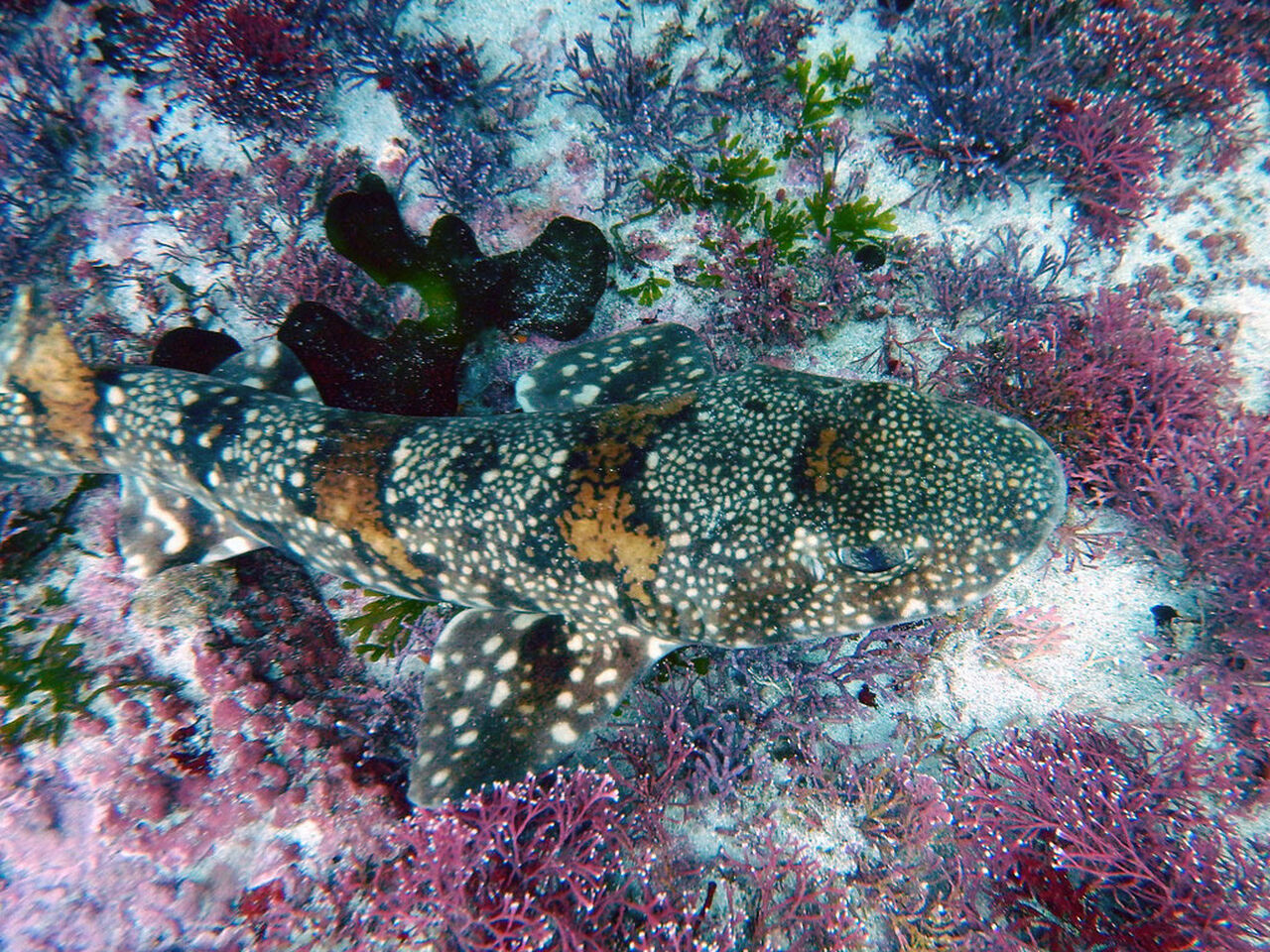The puffadder shyshark is definitely in the running for title of "cutest shark species" (it has our vote), but how much do you know about this little treasure off the South African Coast? Let's take a closer look!
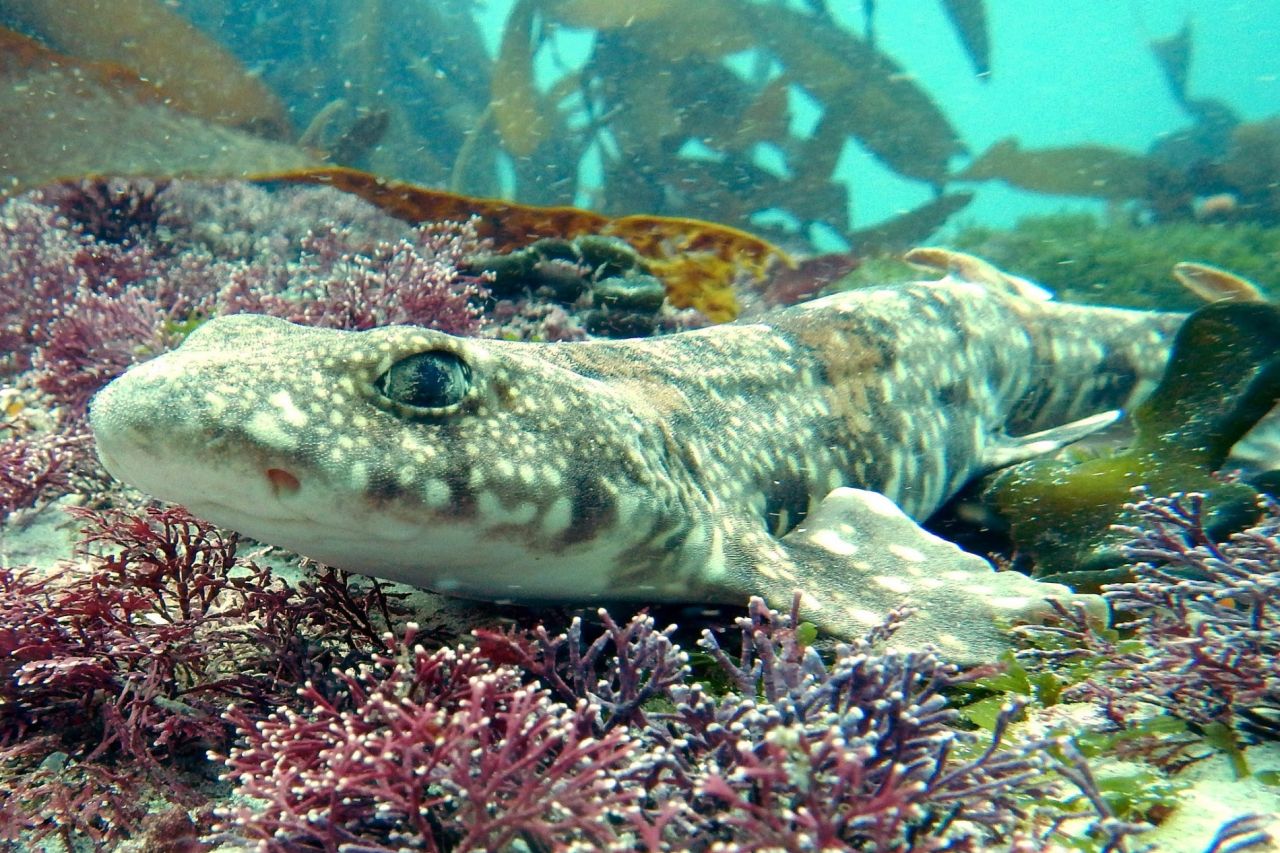
We have quite a few of them in the building. Our visitors can spot them in the Diversity Gallery and many, many school children are normally able to see these animals in person in one of the Two Oceans Aquarium Foundation's two classrooms - and will be able to again when in-person lessons resume.
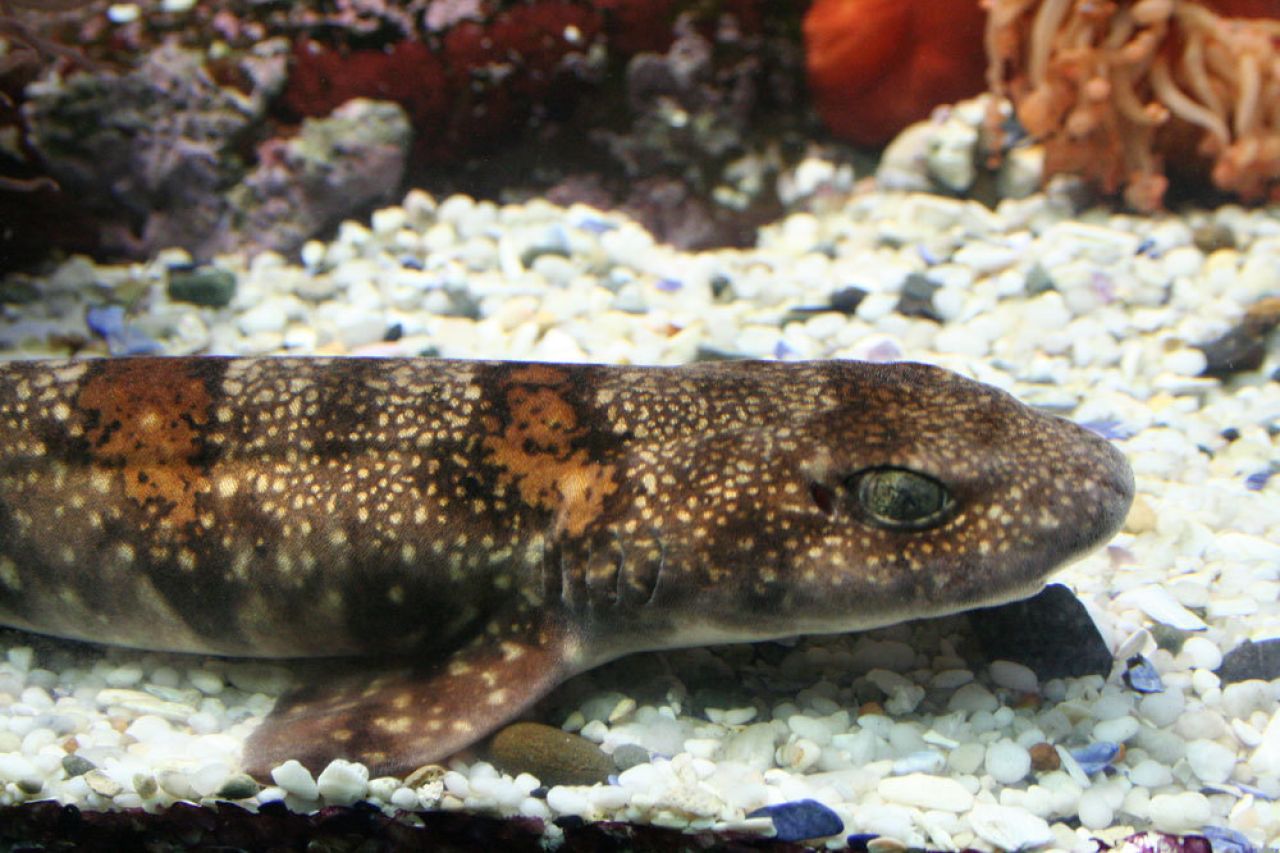
Puffadder shysharks are small catsharks that only reach about 60cm in length, and have a characteristically slender body and flattened head. They are most easily recognised by their small white spots and orange-brown "saddle" pattern, which resembles the camouflage of the puffadder snake from which they draw their name.
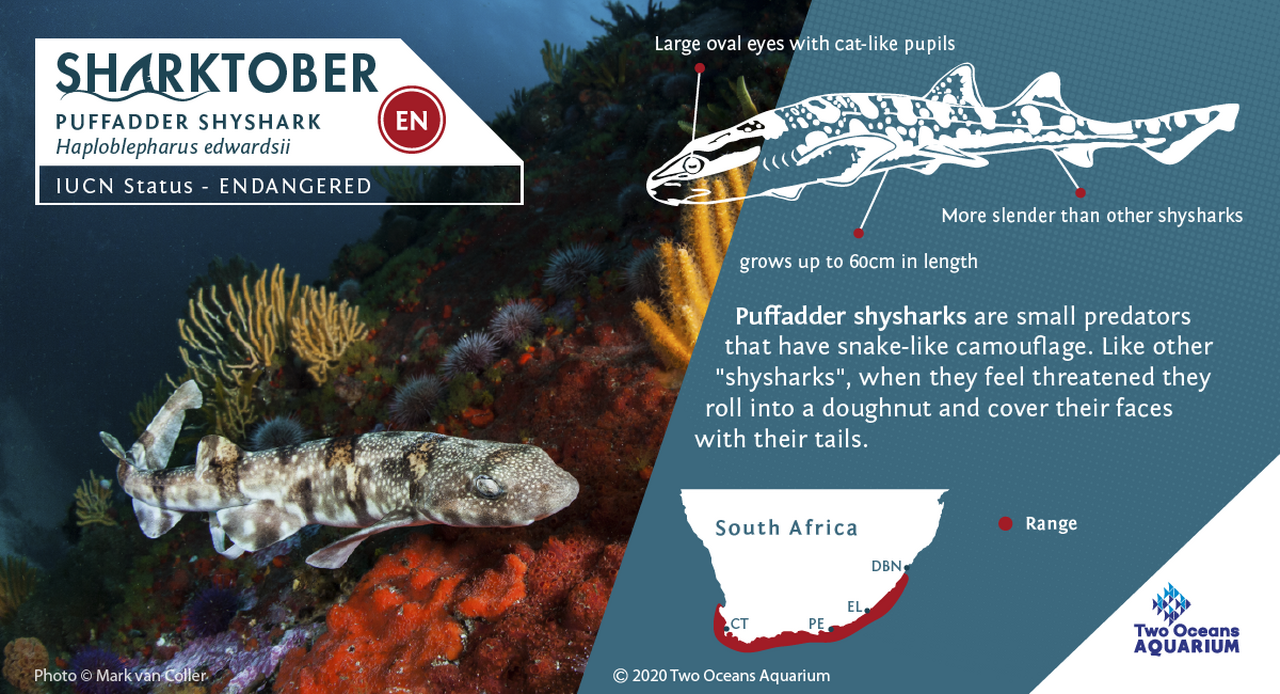
The term “shyshark” comes from the fact that they curl themselves up with their tail fin on top of their head, which we humans interpret as shyness. For them, it is a defence mechanism, as it protects their eyes and makes them more awkward for a predator to swallow whole.
Puffadder shysharks are benthic, which means they live on the sea bed, and are endemic to the coast of South Africa. They have teeth specially adapted for grasping small prey - males have a preference for polychaete worms and females prefer crustaceans. To facilitate this difference, males and females have different teeth - males have 3-pointed teeth, and females have 5-pointed ones.
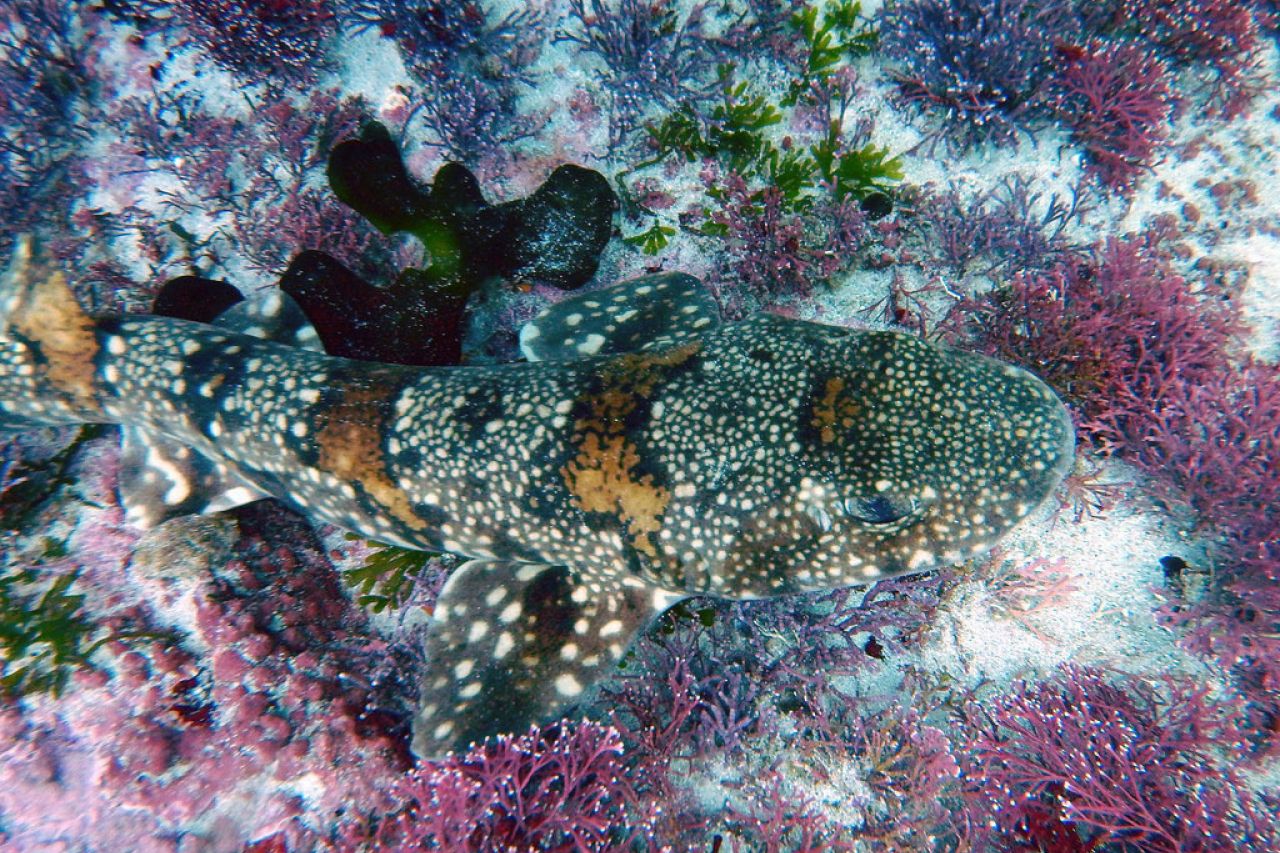
Even though they are solitary hunters, puffadder shysharks like company and it is common to find several of them resting together in crevasses and other sheltered areas. Together they have a better chance of escaping an attack from their main predators - larger sharks, like the broadnose sevengill shark, and Cape fur seals.
George Edwards was a naturalist and called the “Father of British Ornithology”. He looked exactly like what you’d imagine a European man of standing would look like in the 1760s. George, however, was not the one to describe the puffadder shyshark scientifically, even though it was named after him. That honour went to Heinrich Rudolf Schinz, a Swiss naturalist and physician, who dubbed the puffadder shyshark "Haploblepharus edwardsii" in 1822.
In Greek, Haploblepharus means “single eyelid”. This is extremely descriptive, since, like most sharks, the puffadder shyshark has what is called a nictitating membrane. This is a protective “third eyelid” which can be used to cover the eye for protection. Apart from sharks, some reptiles and birds also have a nictitating membrane. Even some mammals, such as polar bears, seals and aardvarks, have full nictitating membranes.

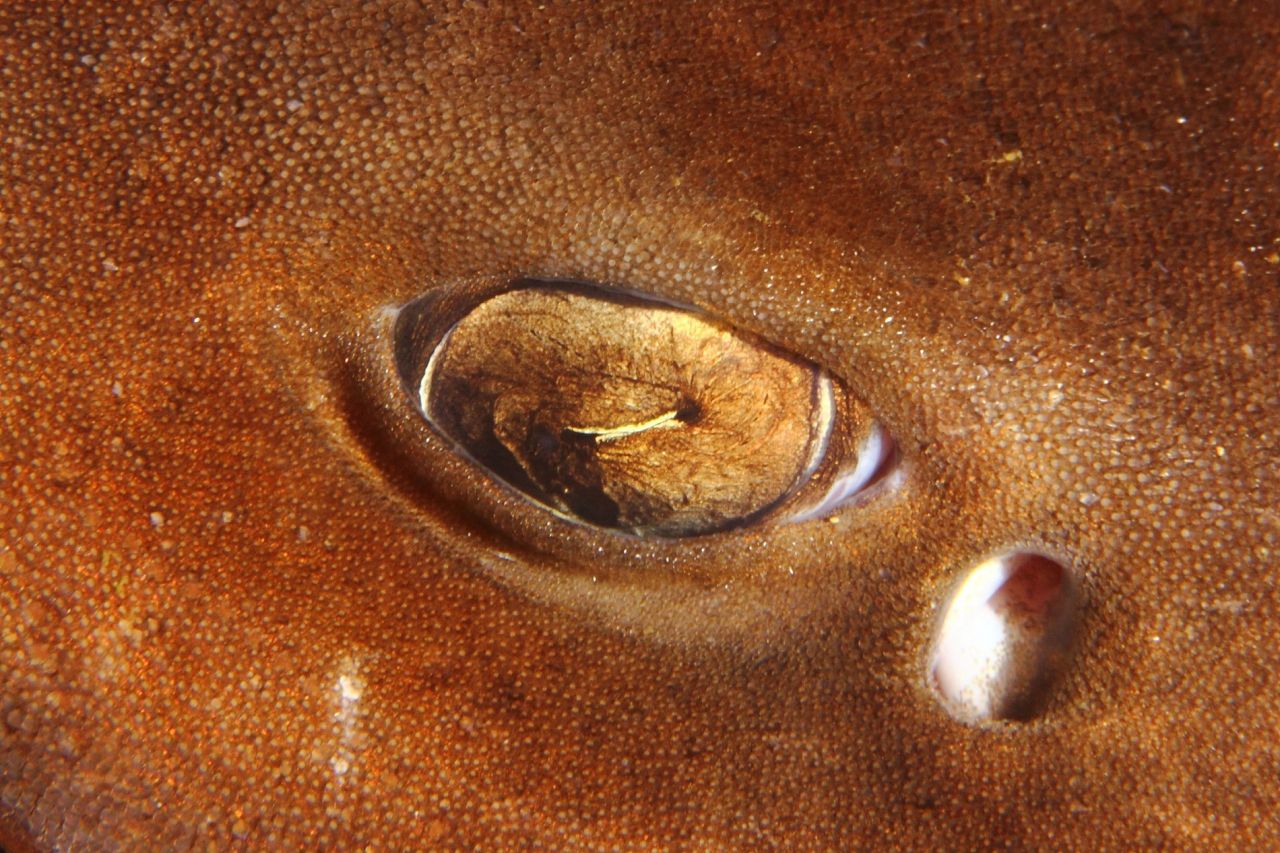
The common name of the puffadder shyshark comes from the fact that the pattern on this shark looks a lot like the patterns you would find on a puffadder snake, but that is where the similarities end. We like to call our puffadder shysharks “puffies” for short.
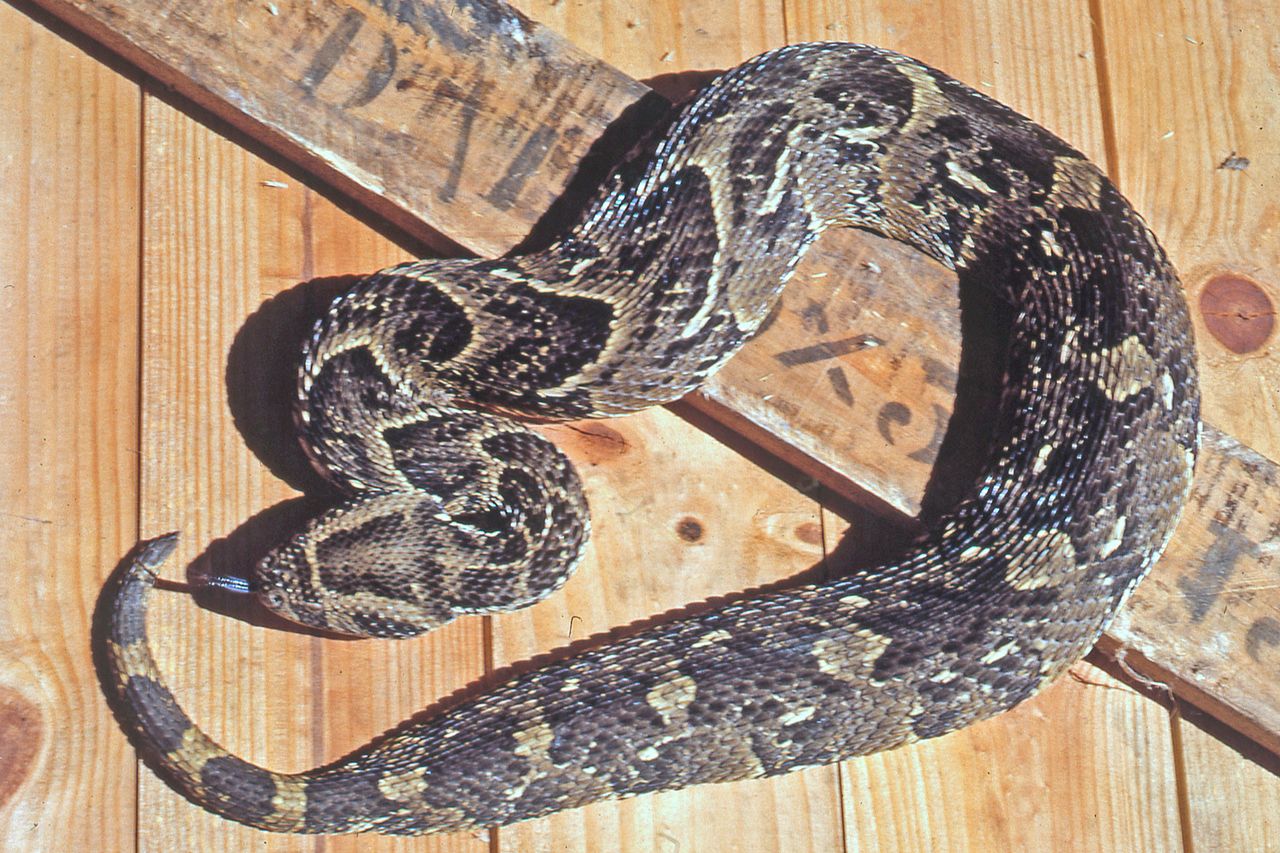
The puffadder shyshark has three other shyshark buddies in its genus Haploblepharus: The brown shyshark, the Natal shyshark and the dark shyshark. With the exception of the dark shyshark, which ranges into Namibian waters, the Haploblepharuses are endemic to South Africa - meaning they live nowhere else on Earth.
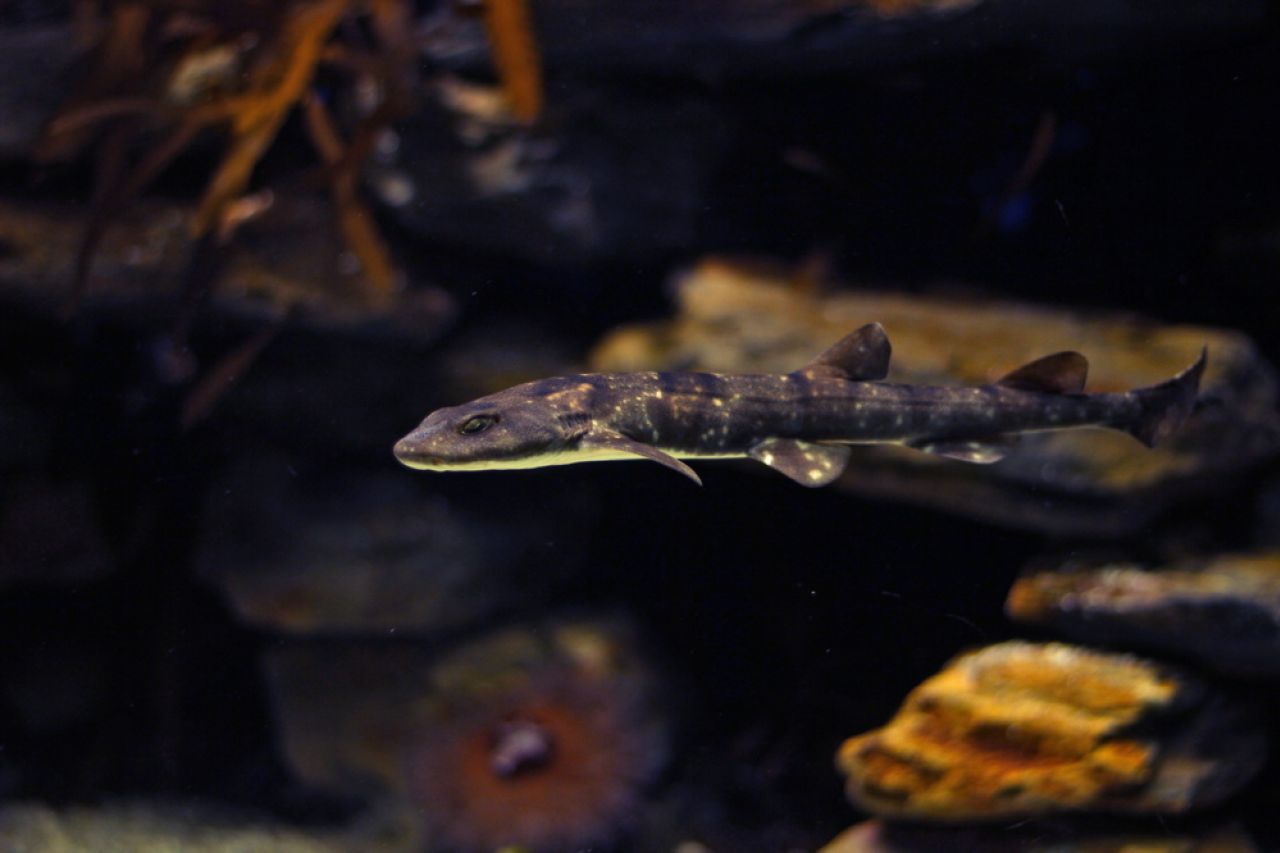
The most interesting thing about their names, however, is that each of the four Haploblepharus shark species has a short name derived from their scientific names. The puffie, Haploblepharus edwardsii, is called “Happy Eddie” for short. The brown shyshark, Haploblepharus fuscus, is “Plain Happy”. The Natal shyshark, Haploblepharus kistnasamyi, is “Happy Chappie” and, lastly, the dark shyshark, Haploblepharus pictus, is “Pretty Happy”. The dark shyshark has reasons to be “Pretty Happy”, as it is the only one of the four that has an IUCN Red List rating of Least Concern - all the others are threatened.
“Happy Eddie”, on the other hand, is Endangered. The reason why almost all of the shysharks are in trouble is that they often end up as bycatch of trawling and shore fisheries. Local fishermen, who catch fish from the shore, are not too fond of them either, regarding them as bait-stealing pests that are killed rather than released. These sharks are also increasingly falling victim to ghost fishing gear, as their favourite hiding spots are often also prone to snagging fishing nets and line.
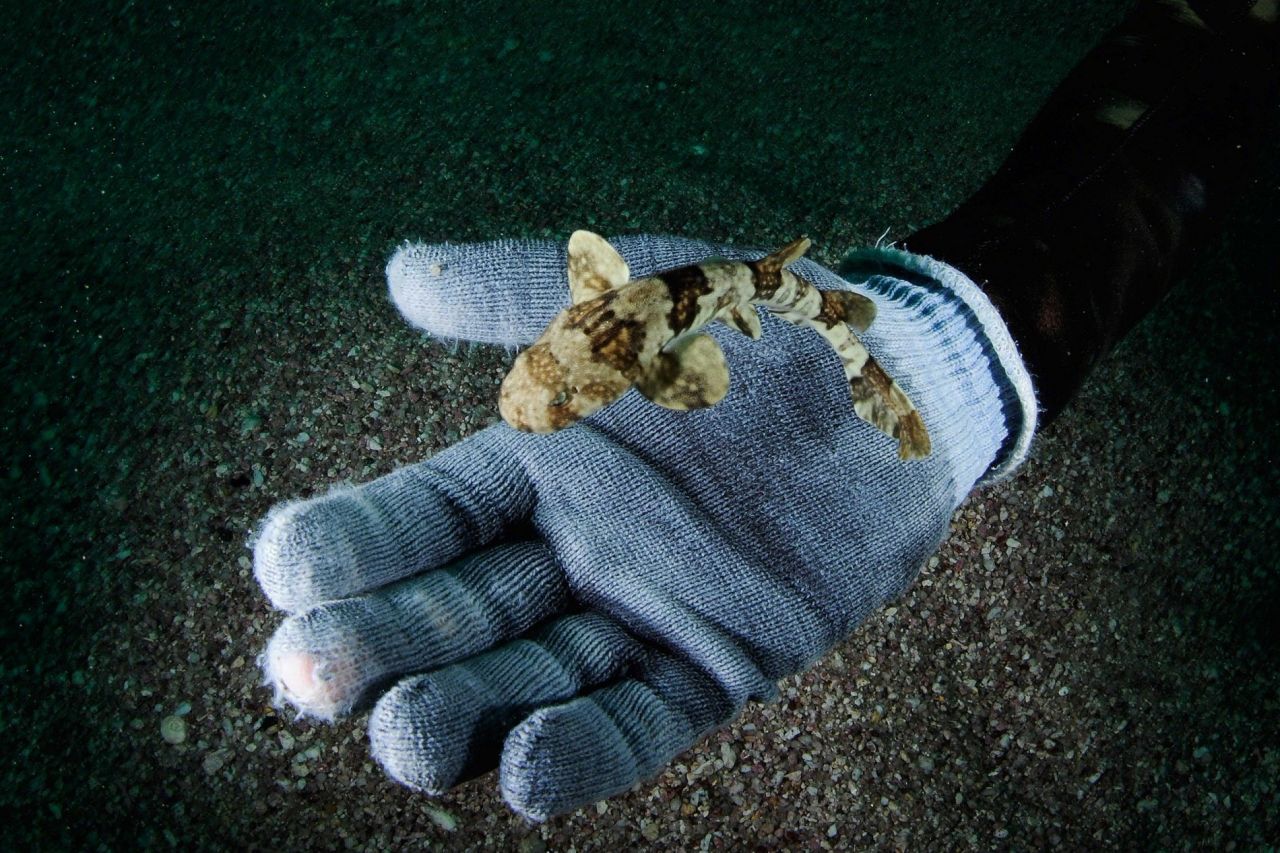
An increasingly apparent factor that puts these, and many other, sharks at increased vulnerability is their slow growth and late age of maturity - factors that make it difficult for their populations to recover. They only reach sexual maturity by about the age of seven and can live up to 22 years. The shyshark is oviparous, which means it lays eggs. A chicken is another example of an oviparous animal. The sharks’ egg cases are often found on beaches, after the baby shark has hatched already, and are commonly referred to as mermaid’s purses. We have our very own mermaid’s purse display at the Aquarium, and if you look closely you can see the little sharks wriggling around in their egg cases.
It takes them up to nine months to hatch and they feed off a yolk sac while they grow. During this time, the eggs are very vulnerable, in fact, there are predatory snails that specialise in sucking the shark embryos out of the eggs! For this reason, mother puffadder shysharks very carefully select hiding spots that allow their uniquely camouflaged eggs to have the best chance of surviving!
Amazingly, puffadder shysharks are among the many creatures of the deep that glow in the dark (under fluorescent light).
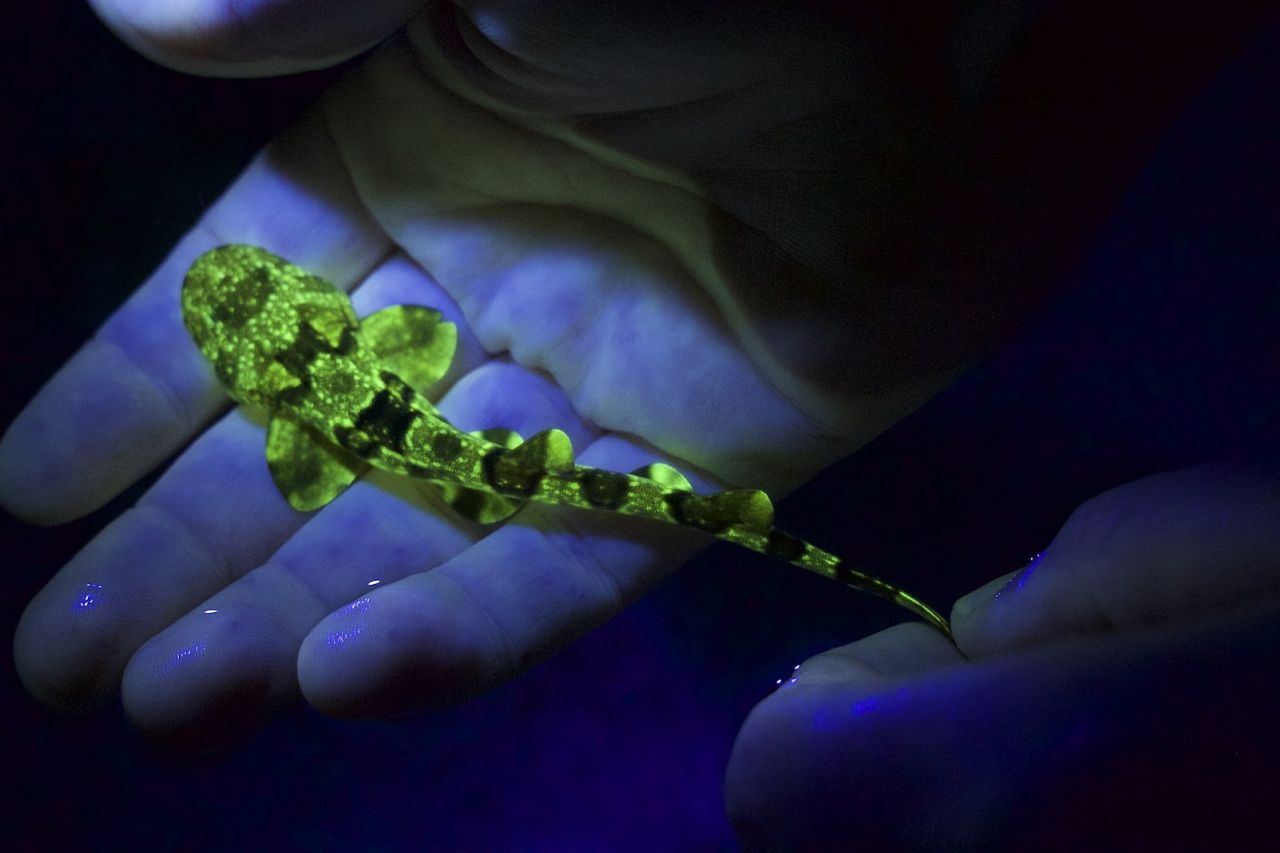
Come and say "hi" to our Happy Eddies and our Pretty Happies. Maybe you can spot the nictitating membrane or the babies in their egg cases!
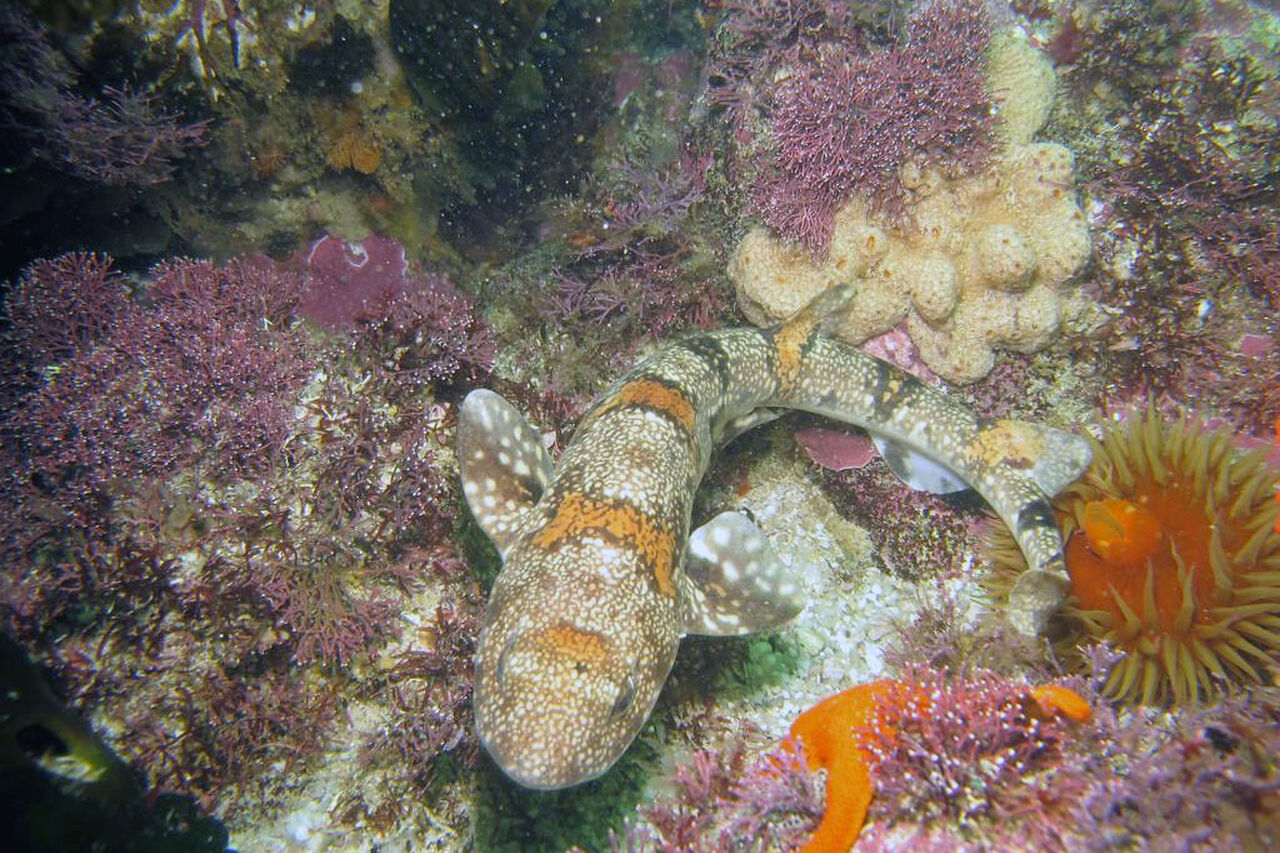
Related News
Sign up to our Newsletter
Receive monthly news, online courses and conservation programmes.
